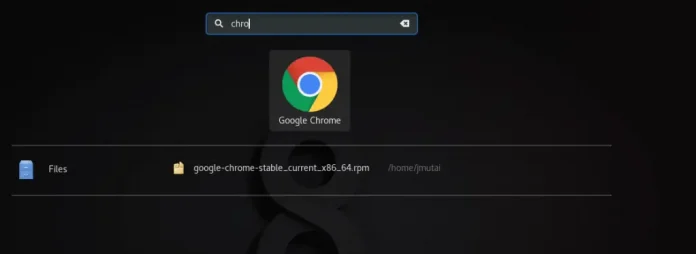This guide has been written to help you install and configure MariaDB 10.9 on CentOS 7 / RHEL 7 Linux system. MariaDB is a multi-user, multi-threaded SQL database server. It is a community-developed fork of the MySQL relational database management system built to be fast, robust and with more features.
CentOS 8: Install MariaDB on CentOS 8
For Ubuntu 18.04 / Ubuntu 16.04, use: How to Install MariaDB 10.x on Ubuntu
Debian: Debian: How to install MariaDB on Debian.
Install MariaDB 10.9 on CentOS 7 / RHEL 7 by following the steps provided below.
Step 1: Update your System
Ensure you are running an up-to-date CentOS 7 server.
sudo yum -y updateStep 2: Add MariaDB 10.9 repository
After updating your system, add MariaDB YUM repository to CentOS 7 / RHEL 7 server:
curl -LsS -O https://downloads.mariadb.com/MariaDB/mariadb_repo_setup
sudo bash mariadb_repo_setup --mariadb-server-version=10.9
Update yum cache index:
sudo yum makecache fastStep 3: Install MariaDB 10.9 on CentOS 7 / RHEL 7
Install MariaDB 10.9 using yum package manager.
sudo yum -y install MariaDB-server MariaDB-client MariaDB-backupMore details about the installed package can be viewed from:
$ rpm -qi MariaDB-server
Name : MariaDB-server
Version : 10.9.4
Release : 1.el7.centos
Architecture: x86_64
Install Date: Thu 17 Nov 2022 11:20:14 AM UTC
Group : Applications/Databases
Size : 130047800
License : GPLv2
Signature : DSA/SHA1, Sat 05 Nov 2022 01:51:31 PM UTC, Key ID cbcb082a1bb943db
Source RPM : MariaDB-server-10.9.4-1.el7.centos.src.rpm
Build Date : Thu 03 Nov 2022 12:14:12 PM UTC
Build Host : centos74-amd64
Relocations : (not relocatable)
Vendor : MariaDB Foundation
URL : http://mariadb.org
Summary : MariaDB database server binaries
....
Start and enable MariaDB service
sudo systemctl enable --now mariadbStep 4: Secure MariaDB Database Server
Now that MariaDB 10.4 is installed on CentOS 7 / RHEL 7, secure it by running mysql_secure_installation.
$ sudo mariadb-secure-installation
NOTE: RUNNING ALL PARTS OF THIS SCRIPT IS RECOMMENDED FOR ALL MariaDB
SERVERS IN PRODUCTION USE! PLEASE READ EACH STEP CAREFULLY!
In order to log into MariaDB to secure it, we'll need the current
password for the root user. If you've just installed MariaDB, and
you haven't set the root password yet, the password will be blank,
so you should just press enter here.
Enter current password for root (enter for none):
OK, successfully used password, moving on...
Setting the root password ensures that nobody can log into the MariaDB
root user without the proper authorisation.
Set root password? [Y/n] y
New password:
Re-enter new password:
Password updated successfully!
Reloading privilege tables..
... Success!
By default, a MariaDB installation has an anonymous user, allowing anyone
to log into MariaDB without having to have a user account created for
them. This is intended only for testing, and to make the installation
go a bit smoother. You should remove them before moving into a
production environment.
Remove anonymous users? [Y/n] y
... Success!
Normally, root should only be allowed to connect from 'localhost'. This
ensures that someone cannot guess at the root password from the network.
Disallow root login remotely? [Y/n] y
... Success!
By default, MariaDB comes with a database named 'test' that anyone can
access. This is also intended only for testing, and should be removed
before moving into a production environment.
Remove test database and access to it? [Y/n] y
- Dropping test database...
... Success!
- Removing privileges on test database...
... Success!
Reloading the privilege tables will ensure that all changes made so far
will take effect immediately.
Reload privilege tables now? [Y/n] y
... Success!
Cleaning up...
All done! If you've completed all of the above steps, your MariaDB
installation should now be secure.
Thanks for using MariaDB!
Log in and check MariaDB version:
$ mysql -u root -p
Enter password:
Welcome to the MariaDB monitor. Commands end with ; or \g.
Your MariaDB connection id is 18
Server version: 10.9.4-MariaDB MariaDB Server
Copyright (c) 2000, 2018, Oracle, MariaDB Corporation Ab and others.
Type 'help;' or '\h' for help. Type '\c' to clear the current input statement.
MariaDB [(none)]> SELECT VERSION();
+----------------+
| VERSION() |
+----------------+
| 10.9.4-MariaDB |
+----------------+
1 row in set (0.001 sec)
MariaDB [(none)]> QUIT
Bye
You can also check version using:
# mysql -V
mysql Ver 15.1 Distrib 10.9.4-MariaDB, for Linux (x86_64) using readline 5.1You should now be running MariaDB 10.9 on CentOS 7 / RHEL 7 server.
If you want to go MySQL way. check our previous guide:




